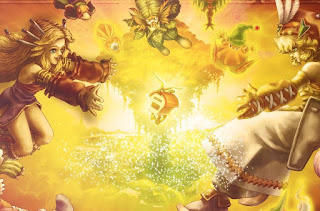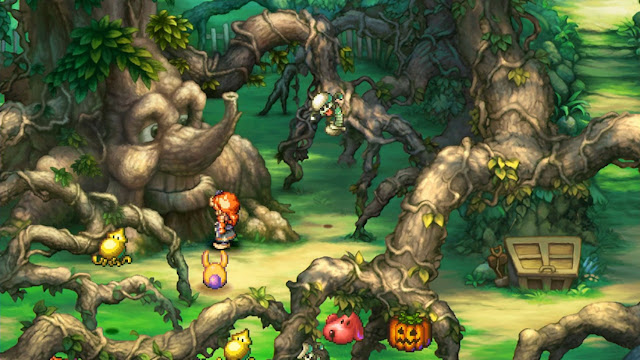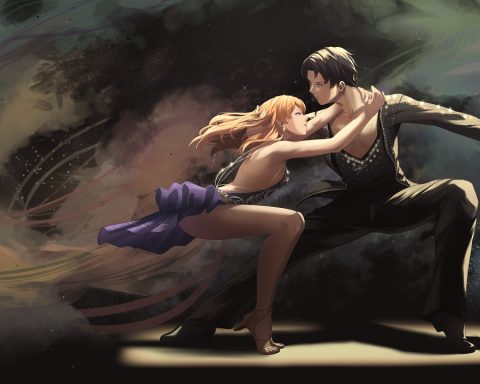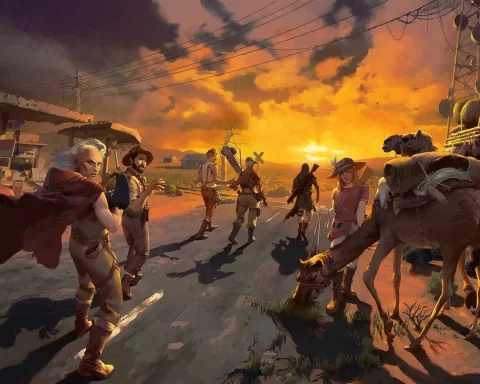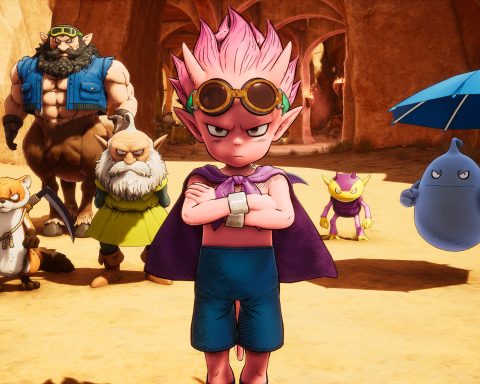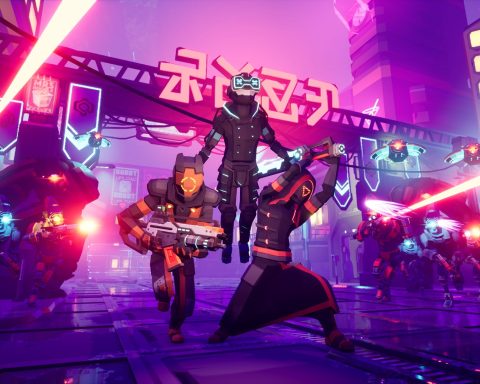As I was playing Legend of Mana, I found myself constantly wondering at just how innovative and beautiful this game must have seemed back on the PlayStation, where it originally released in 1999 (2000 in North America). On its art and aesthetics alone, this is one incredibly noteworthy game, and it has been nothing short of a gift for Square Enix to give us this HD remaster – a release for the first time in Europe and Australia – and the chance to experience one of the “forgotten” gems in Square’s deep, deep library.
Every square centimetre of every environment in Legend of Mana absolutely drips with atmosphere, thanks to its hyper-detailed sprites, beautiful background work, and hand-drawn art. With much of the game being broken up into small chunks (more on that later), it’s the aesthetics that do the heavy lifting in terms of giving the world context and cohesiveness, and the developers achieved this with such perfect mastery, even back in 1999, that every new environment was a joy to explore, simply to experience it at all. Even with the relatively streamlined narrative and silent protagonist, enemy designs are so charming, and the occasional NPC designed so cleverly, that there’s a deep sense of place and time in Legend of Mana. In simple terms, it’s immersive. Every second I spend playing this game I was deeply, truly immersed in the picture it was painting for me.
Of course, the Mana series has always been known for its particularly beautiful art style, while also having the unfortunate distinction of being one of Square Enix’s more fringe properties. Last year’s 3D remake of Trials of Mana hopefully took strides to right the ship and draw mainstream attention, because that was a particularly effective modernisation project. Unfortunately, Legend of Mana isn’t going to be the same. I love it for its whimsical creativity and I’ve been playing games long enough that the lack of hand-holding doesn’t bother me. For other people, though, it’s going to be a bigger issue and getting “lost” and “confused” about what the game wants them to do next is a real possibility.
See, where Legend of Mana stands out is that you actually build the world around you. At the very start of the game, the only environment on the overworld map is your own home. The Tree of Mana – the recurring central figure to the entire franchise – has been reduced to nothing more than a sapling. The goal, then, is to take “artefacts” that you earn by exploring, and use them to summon environments – towns, coastal areas, forests and deserts – into the world, which then gives you new environments to explore and artifacts to earn. This also has the effect of re-growing the Tree of Mana, and altering the mix of elements in the world. Unfortunately, these systems aren’t really explained at first (there’s a lot of trial and error that goes on to learn Legend of Mana), but as you become more comfortable with it, it becomes a true delight to have that much control over the evolution of the very world that you’re exploring.
There’s a strong message of restoration there, too. The Mana series has always had a heavy streak of environmentalism (what do you expect from a series that makes the God-proxy on earth a tree?) and while it’s never too heavy-handed about it, it’s also not exactly subtle about it, either. Through much of Legend of Mana your goal is to oppose the forces that seek to exploit the world and expel the unnatural in order to allow the natural order to thrive again. It goes without saying that this particular theme is pretty poignant these days, and the ideas that the game expresses around conflict over resources, the corruption of power and so on, is resonant, important and still interesting to this day.
It is told in a disjointed way, though, and again you’re going to need to concentrate to get the most out of Legend of Mana. There are overarching narratives, and also small sub-plots to continue along the way, and the manner with which everything is linked is, initially, confusing. Each new “reborn area” has its own little narrative arc to share, and piecing them together to understand the whole is largely on the initiative of the player. In 2021, gaming audiences are used to stories being handed to them on a silver platter, though I am comforted that the recent remake of the similarly experimental and “disjointed” SaGa Frontier went down well, so there should be an audience that gets along with this structure in Legend of Mana anyway.
Combat plays out in real-time, as with all Mana titles, but here it does feel a little more clumsy than some of the other titles in the series. It’s still highly playable, but characters have a stilted way that they move around areas, the “cool-down” after a combo attack feels excessive, and special abilities and the like feel like they take up an inordinate amount of time. Boss battles are simultaneously the most impressive and most frustrating part of the game. The bosses are huge on the screen and absolutely beautifully rendered. They also fall to relatively simple and repeated attacks, and their own attack range is limited. Finally, this is a really small issue but I found it annoyed me an inordinate amount for some reason: when you defeat an enemy, they’ll drop experience point items, gold, and occasionally other pieces of loot. Fine. Great. However that treasure disappears if it’s not picked up quickly, and if there are other enemies in the area, the relatively limited range and flexibility of movement and speed mean that you can miss out. Particularly if you’re playing a ranged class and have to watch your character creep over to the defeated enemy. Leaving that stuff on the map longer would have been appreciated.
One thing that is noteworthy, however, is that Legend of Mana isn’t that concerned with being a combat-heavy game. In fact, one quality-of-life feature is that you can turn off all enemy battles aside from boss battles, and what requirements there are to grind are really a soft-touch approach.
In effect, Legend of Mana is less interested in being a JRPG as it is a story of immersion. You’re given these truly beautiful, art gallery-worthy environments to explore, these eclectic, memorable characters to interact with, and a narrative that is broken up into a series of vignettes that keeps the overall game feeling vibrant and energetic. Perhaps the best comparison I can draw with Legend of Mana is to that of the most beautiful picture book version of Aesop’s Fables you could imagine. Without being religiously heavy-handed, this game has a way of sharing wonderful little stories of morality and humour, and it’s certainly going to be rolling around in my head for some time to come entirely because of the quality of those stories.
– Matt S.
Editor-in-Chief
Find me on Twitter: @mattsainsb

